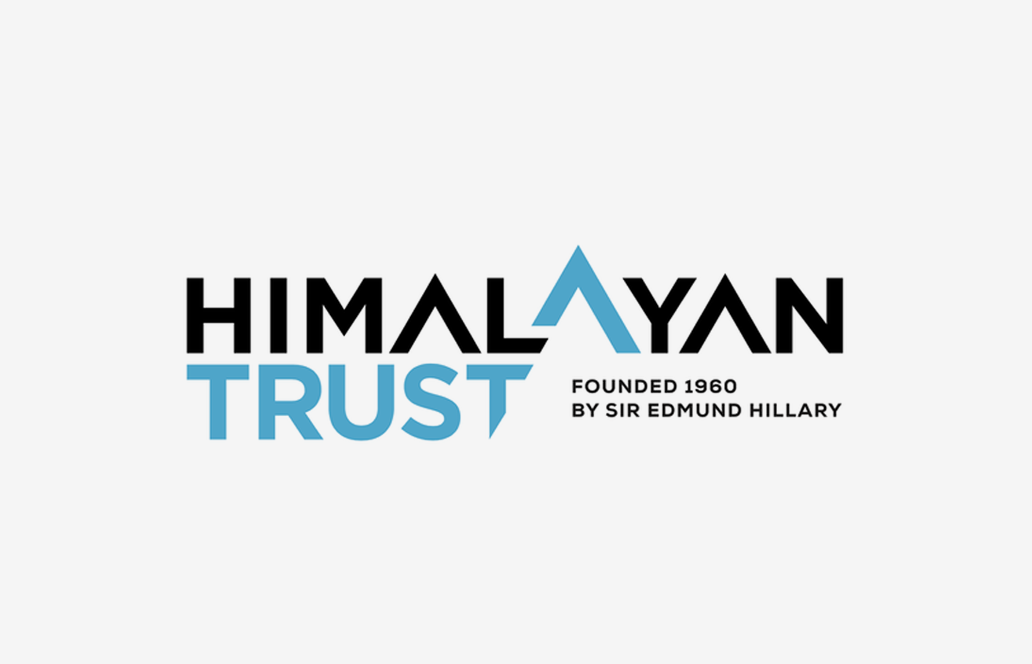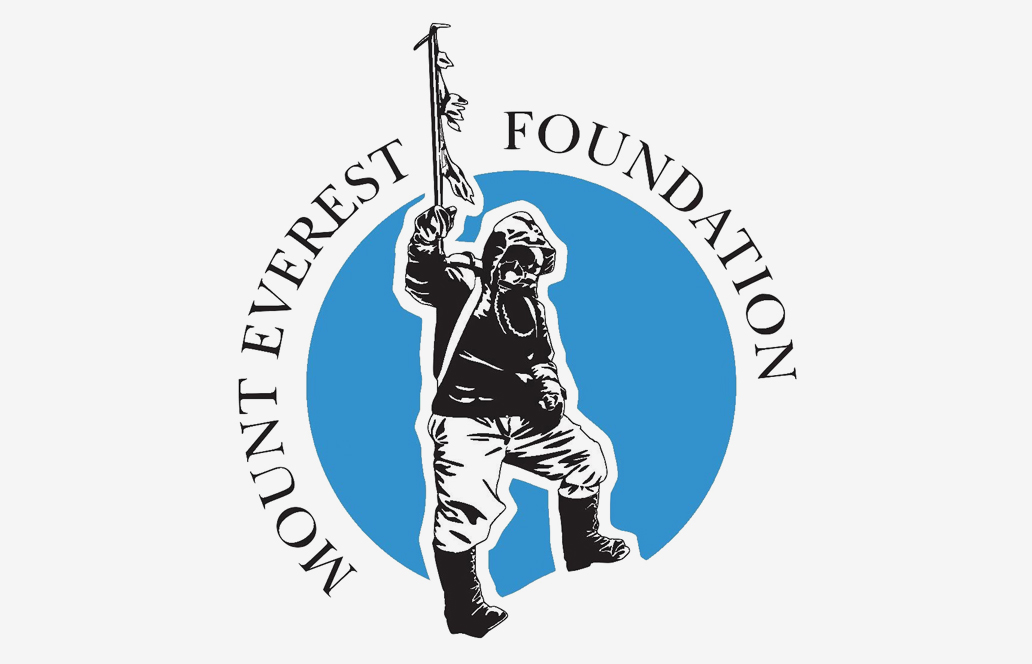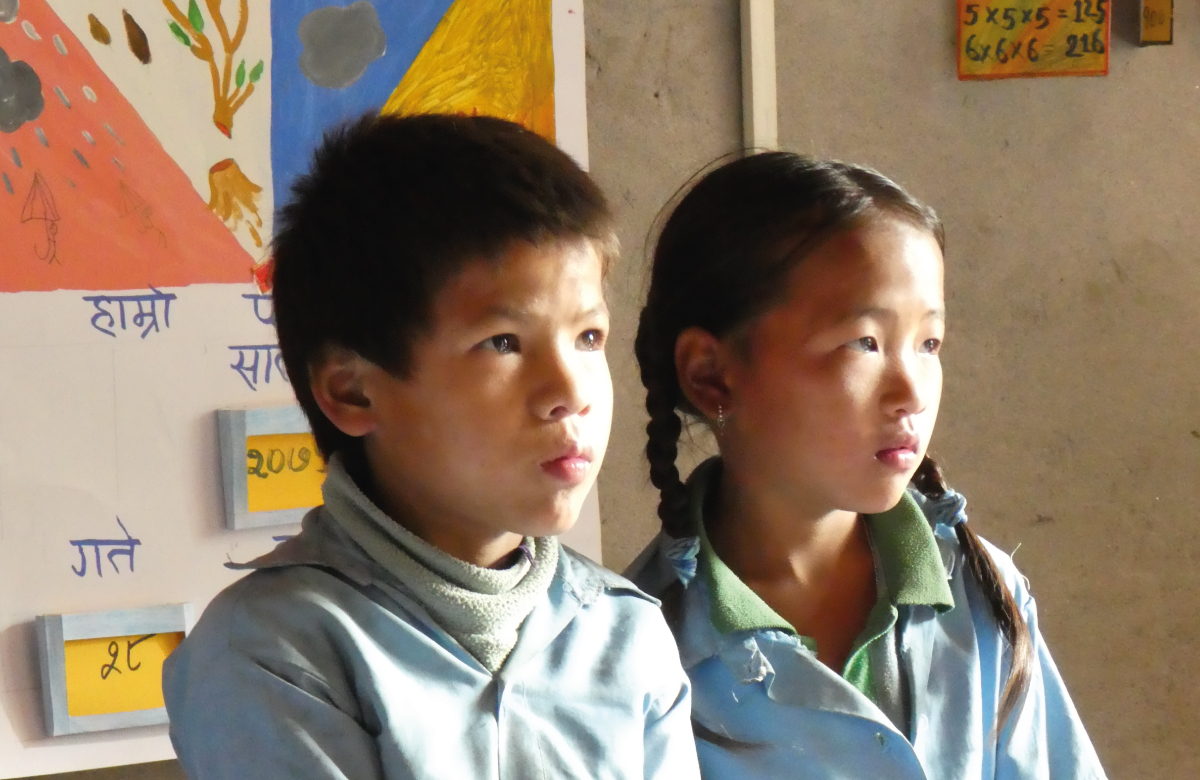Kanchenjunga Diary extract 1955: George Band Summit Climb
The successful ascent of Mt Everest in 1953 inspired more successful climbs of “eight-thousanders”. One of these was Mt Kanchenjunga by George Band, one of the 1953 expedition members.
Just like the 1953 expedition resulted in a special relationship with the people from the Khumbu area, George developed a special relationship with the people of the Taplejung area in which Kanchenjunga stands. This relationship eventually resulted in extending Sir Ed’s legacy to a new area when the Himalayan Trust UK introduced an Education Programme, modelled on the Teacher Training Programme started by Sir Ed, to Taplejung in 2007.
This is how the relationship began …
Kanchenjunga Diary extract 1955: George Band Summit Climb
Climbing the steep snow-covered incline called “The Gangway”, George and Joe spend the night at Camp VI, a ledge cut into a 45 degree snow slope described as ‘almost wide enough for a tent’.24th May
A very pleasant evening. We are tied to a rock spike in case the tent rolls off. Supper: ‘lemji, tea, asparagus soup, tongue and pom, drinking chocolate. Joe photographs sunset on Jannu through tent sleeve. We talk about the play of chance in being chosen for Himalayan trips – others with much the same experience have to be disappointed – and of our respective ways of life. I try to convince Joe that University undergraduates aren’t all rich men! Get sleeping oxygen ready and change a film clumsily, after pricking two frost bite blisters. In bed by 8. I lose by drawing the shorter matchstick so take the outside berth. Wearing everything including boots inside one sleeping bag. Intermittent flickers of lightning. Rustles of wind and the occasional snow pellets which skip down the slope and flick against the tent canvas, suggest a snowfall. However, weather remains perfect. I don’t sleep much at first – O2 (oxygen) dreams, but in monochrome now or at most a mild sepia toning.THE FIRST ASSAULT – 25th May
O2 finished 5am. One wakes automatically. Joe cooked while I prepared O2 sets. Two pints of tea each and a biscuit or two. We leave at 8.15 – still in shade – and out into Gangway. Leading at first; two steep for cramponning easily, so we cut steps. We intend to climb across the S.W. face, starting at a series of snow patches and then join the W. Ridge above its worst section. We go onto the snow patch we think is right and spend an abortive hour there before realising we are wrong, so return onto the Gangway. We conserve O2 now, and whenever possible use the minimum of 2 litres/minutes – half the normal climbing rate. We lead through, zigzagging up the gangway. Joe takes the zigs, cutting steps very efficiently, and I zag. Near the top Joe is leading. We take to the rocks and stop to remove our crampons. Mixed climbing with a rotten snow patch above. Joe inserts a piton and a tricky rock pitch follows. “Come on George, it’s not more than difficult” (standard). Above are two ice-pitches, perhaps 60 degrees with a rocky stance between giving a real feeling of exposure. I’m tired. This low rate of O2 doesn’t suit me. I curse the cumbersome coils of rope and, on the rocky pitches, ice-axe, gloves and delicate finger tips are an irritating hindrance. Joe has a wrist-sling on his axe which is handy for the rock work and mixed climbing. Joe offers to stay in the lead and I accept gladly. A curious corkscrew pitch and we come out onto the subsidiary snow ridge leading back to the main west ridge. Hurrah! Summit pyramid visible and the way seems clear for a good distance.The bridge of my nose is sore with the oxygen mask, but one must try and keep a tight seal there otherwise one’s goggles fog up. I warn Joe several times about snowblindness when I see him pushing his up and momentarily doing without them. At 1.50pm we join the West ridge and have our first rest of the day in a hollow on the ridge crest. Looked over and down onto north-west face. Switched off O2. Lemonade, glucose, treacle toffee and mint cake. After 10 minutes we carry on. Only two hours O2 left. We should turn back by 3pm at the latest. Easier now. We keep to right of crest and skirt beneath the final rocky bluff. Some good scrambling.
Now there is a red-brown rock wall above. Joe chooses a vertical broken 20’ crack with an overhanging bulge in it – the hardest part of the whole climb – very difficult (standard) even at sea level we thought. So I follow up. He persuades me to leave my ice-axe behind in a rock niche because we are there – 2.45pm.
On top is a gently sloping hard snow cover rising highest to the North-East where it is about 5’ higher than the rocks on which we stand. We cross to a little rocky promontory on the South side about 20’ away from the summit.
Joe pushes me so my back is toward the summit and says: “Let’s get this photo business over”.
The view is impressive. A cloud sea covers all beneath 20,000 feet. To the West beyond the sharp wedge of the West Peak are Makalu, Lhotse and Everest. We cross in turn to the northern edge, keeping our distance from the summit, and I photograph. There is the top of the Bavarian’ NE spur and through rents in the cloud, the grey snake of the Kangchenjunga glacier. Thirteen miles away lies Tibet – smooth rounded hills half in cloud and only capped with snow.
After 15 minutes we set off down. I just remember to pocket a rock souvenir – a large flake of grey banded gneiss which can be chopped up afterwards. Many metamorphosed rock types here – even bands of dark politic schist. I lead down the crack. Carry on down quickly. Joe’s oxygen gives out at 4.10pm and mine 20 minutes later. Feeling pretty tired. Once I slip in poor snow but regain control and stop in five feet. “It makes me breathless to watch” said Joe. Crampons again and into the shade of the Gangway just as the sun is gilding the crags above most wonderfully. There are shouts.
We respond and are guided in by their sound – into Camp VI at 7pm. Hardy and Streather are in occupation ready for their attempt. But it is too late for Joe and me to try to descend to Camp V. We must stay. Norman and Tony are wonderful hosts. Crouching outside, we drink lemj, tea and then crawl in for soup.
A horrid night. Norman and Tony have the two sleeping bags and a little oxygen as they still want to have a crack at the summit tomorrow. Joe and I squeeze in. We lie diagonally. I overhang space but am on a li-lo. Joe is in the icy gap between the two and is in great pain with snow blindness. We aren’t belayed to the rock-spike at all tonight, although I’m still roped. Not a wink of sleep, it seems.
“It was more exacting than the Dru” says Joe quietly and I am gratified.
George Band, 1955
Adding to the legacy of 1953
George Lowe and George Band, fellow mountaineers of the 1953 Expedition, founded The Himalayan Trust UK in 1989 when it became apparent that there was appetite in the UK to support the work of Sir Edmund Hillary. Initially the UK Trust supported the work done by the New Zealand Trust. George Lowe had been involved with the inspection of the schools built by Sir Ed and it was his report that instigated the start of the Teacher Training Programme in 1997 run by Sir Ed and the New Zealand Trust. Following the success of these early educational programmes and the continuing support in the UK for the work in Nepal, prompted a desire to expand the reach of the UK Trust.
George Band, who was Chairman of Himalayan Trust UK (HTUK) at the time, was the first to ascend Mt Kanchenjunga back in the fifties. When George and Susan Band went to Kangchenjunga to mark the 50th anniversary of George Band’s and Joe Brown’s first ascent, they received petitions from the local people, similar to those Sir Ed had received in the SoluKhumbu. The people from the Kanchenjunga region were keen to work with HTUK to replicate the success of the educational training in the Everest region. Kanchenjunga had been largely ignored by NGOs and the development sector and there was already a special relationship with Taplejung.
It seemed a perfect fit for the UK Trust to introduce their own Education Programme in Taplejung in 2007 and they subsequently added a dedicated Health Programme in 2013 adding to the enduring legacy of 1953.










